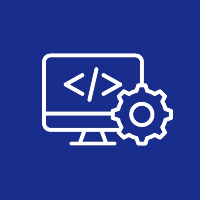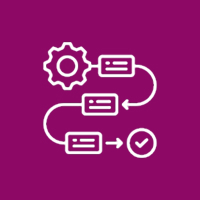Visual Basic 6 (VB6) has powered countless business applications for decades. However, as technology evolves, continuing to rely on VB6 limits scalability, security, and integration capabilities. Modernizing these legacy systems to VB.NET offers improved performance, access to modern frameworks, and long-term support.
In this blog, we’ll explore best practices for migrating VB6 applications to VB.NET, helping you ensure a smooth transition that maximizes the value of your investment while positioning your business for future growth.
Why Upgrade from VB6 to VB.NET?
As society continues to accelerate digital transformation, organizations have appropriately reserved more budgets to assess the risk of poorly maintained VB6 applications.
There are a few main benefits to moving to VB.NET and the .NET framework:
Enhanced Security: The .NET framework includes advanced security features beyond a standard runtime, such as code access security, role-based security, and encryption, which can help protect sensitive data and maintain compliance.
Performance Gains: Through a more sophisticated runtime and garbage collection, your VB.NET applications have the potential to run faster than your existing VB6 versions.
Boost Integration: Modern organizations and businesses require a more seamless exchange of information across applications. Compared to VB6, the .NET framework allows you to more easily integrate with RESTful APIs, cloud services, and modern, new-age databases.
Planning for the Future: As Microsoft no longer supports VB6, continued editing and maintenance of these applications will become even more obsolete, risky, and less secured. However, with continuously developing .NET framework and language updates plus a strong support community, your VB.NET applications will be much more relevant and secured.
Ease of Maintenance: VB.NET and the .NET framework support object-oriented programming, structured exception handling, and modern development environments (like Visual Studio) making the code much easier to read, maintain, and support developer high productivity.
Best Practices for VB6 to VB.NET Migration
When migrating from VB6 to VB.NET, there are a number of best practices to help make your migration successful:
1. Full Assessment
The first step is to perform a complete audit of your VB6 applications. A full audit will identify customized controls, third-party dependencies, and business-critical components, as well as identify parts of the applications that require rewriting. A complete walkthrough against your VB6 applications ensures that you create a migration roadmap that aligns with your company’s priorities for business continuity.
2. Phased Migration
A phased migration supports risk mitigation as well as functional validation. A phased migration allows for one module/feature to be migrated at a time, and during business operations you can gain functionality while adding other improvements.
3. Automated Tools (but manual review)
Migration tools, like the Visual Basic Upgrade Wizard, can help migrate VB6 code to VB.NET code. In particular, while you can extract a lot of code through automated migration paths; you should still use people to complete manual review and refactorings to improve performance, improve design patterns and to properly capatalize on .NET features you would like to leverage.
4. Embrace .NET Features
Don’t just convert code—modernize it. Use Windows Forms or WPF to enhance the user interface, adopt ADO.NET for efficient database interaction, and implement asynchronous programming patterns to improve responsiveness. Embracing these features ensures your application takes full advantage of the .NET platform.
5. Rigorous Testing
Migration can introduce unexpected issues. Comprehensive testing—including unit, integration, and user acceptance tests—ensures your application behaves as expected and meets user needs. Automated testing frameworks can speed this process while maintaining quality.
6. Training and Documentation
Train your development and maintenance teams on VB.NET and updated workflows. Maintain thorough documentation of changes and new features, making future updates easier and helping new team members get up to speed quickly.
How Edge Technology Can Help with Your Migration
Edge Technology has extensive experience with legacy applications modernization and is focused on to minimizing disruption while maximizing value. Our services encapsulating the full range of VB6 to VB.NET migrations dividend into:
- Assessment & Planning: We assess your applications, identify risks and opportunities to present a migration plan to suit your requirements.
- Code Conversion: Our automation tools complemented with with extensive manual refactoring or code conversion ensures that you have a modern application that performs with quality and maintainability in mind.
- UI Modernization: Although we are converting code, we also work to modernize the user experience using current UI frameworks and design approaches.
- Testing & Quality Assurance: Our testing processes ensure the modernized application meets your functional and stability requirements.
- Support & Maintenance Post Migration: Our post migration support includes updates, issue resolution and overall support to keep your applications functional.
- Knowledge Transfer: We provide the base knowledge and documentation to ensure your internal teams can keep developing and maintaining functionality or applications.
Our expert partners will be here with you and deliver an efficient, effective migration that supports your IT environment to your business goals.
Conclusion
Modernizing your VB6 applications to VB.NET is not just about upgrading technology — it’s about future-proofing your business. By embracing modern development standards, improving performance, and enhancing security, you position your applications and organization for long-term success.
Choosing the right partner is crucial. Edge Technology’s expertise in VB6 to VB.NET migration ensures your legacy systems evolve smoothly with minimal risk and maximum benefit.
Ready to modernize your VB6 applications?













 Database Development
Database Development












































